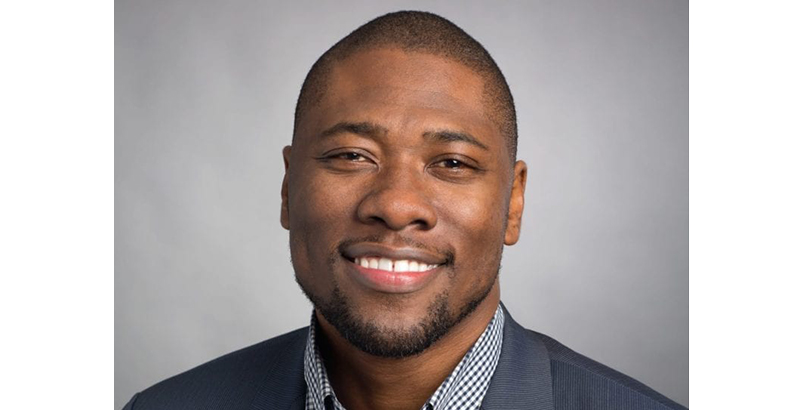Closing California’s Achievement Gap: Ryan Smith, Co-Chair of New Golden State Initiative, Talks About What It Will Take to Bring Equity to Every Classroom

This article was produced in partnership with LA School Report
Closing the achievement gap has become one of the most critical educational challenges in California. As part of state Superintendent of Public Instruction Tony Thurmond’s new initiative to close that gap, he has created a working group to look closely at schools throughout the state that have shown success in improving outcomes for African-Americans, Latinos and other students of color, while also addressing the recruitment and retention of teachers of color.
Last year, 36 percent of economically disadvantaged Latino students in California were proficient in reading and 27 percent were proficient in math on state tests. For economically disadvantaged African-American students, the outcomes were even lower: 27 percent were proficient in reading and 15 percent were in math. English learners scored at the bottom of all student subgroups, showing almost no growth — less than 1 percentage point — in comparison to the previous year’s scores, with 12.6 percent of them meeting standards in reading and math.
A recent study found that the achievement gap is deeper for low-income African-American students than for low-income Latinos in Los Angeles; it also found that many schools are showing progress with these student groups, but still only 2 out of 10 of them have access to schools that are helping them succeed.
The new working group will explore what it would take to improve educational outcomes for the most vulnerable students in California’s public schools. Thurmond appointed three co-chairs to lead the statewide task force: Ryan Smith, who recently joined the Partnership for Los Angeles Schools as chief external officer; Roseann Torres, the founding attorney and CEO of Torres Law Group and a member of the Oakland Unified School District Board of Education, and Manufou Liaiga-Anoa’i, a social justice advocate and the first Samoan Pacific Islander to serve on the Jefferson Elementary School District Board in Daly City.
“Ryan is a leader in the efforts to close the achievement gap, and specifically in how we can use policy, advocacy, and research to make change,” said Thurmond in a news release when announcing Smith’s appointment last month. Smith has a long record working for disadvantaged students in Los Angeles, previously working for the United Way of Greater Los Angeles and as former executive director of Education Trust–West, a research and advocacy organization.
The 74 asked Smith what it will take to close the stubborn achievement gap for students of color in California. His written answers have been edited for length and clarity.
The 74: As the new chair of the Closing the Achievement Gap Initiative for California, tell us about the initiative’s goals and how they can be achieved.
Smith: I’m grateful to State Superintendent Thurmond for the opportunity to co-chair California’s new “Closing the Achievement Gap Initiative.” I’m also delighted to work with fellow equity champions Manufou Liaiga-Anoa’i and Roseann Torres as co-chairs of the effort. I believe it’s essential that we commit to closing these stubborn equity gaps for California’s low-income students and students of color in this generation.
Superintendent Thurmond has identified the recruitment and retention of teachers of color, particularly male teachers of color, as one of his main priorities. Research from Dr. Travis Bristol, Dr. Ashley Griffin, the Education Trust and others show that having teachers of color in our classrooms is important to students’ academic and social-emotional well-being. For example, having one African-American teacher for a year in elementary school has positive effects that persist for years to come, especially for low-income black students. My hope is that we can identify bright-spot school districts, colleges and universities focused on recruiting, retaining and preparing more teachers of color and share their work across the state.
Although we’re in the early stages of the initiative, I also believe there will be space to focus on other important areas, including increasing literacy rates by enabling every student to read by or before the third grade, investing in early and expanded learning opportunities and improving supports for black and Latinx students as well as English learners.
We will start the planning phase for the Closing the Achievement Gap initiative in June with meetings taking place across the state.
How is closing the achievement gap being addressed differently now compared to 10 years ago?
Over the past decade, I think we have done a better job focusing on closing both opportunity and achievement gaps. Although talent is distributed equally to all students, opportunity is not. We must provide more access to experienced and effective educators, rigorous and relevant curriculum, and restorative justice practices for low-income students, students of color and English learners. We also must hold the system accountable for getting results for all students.
I also believe these days there is a more active discussion about the intersection between racial justice and education. We have a broader understanding of the history of the unfair system we’re trying to dismantle. Similar to our country’s criminal justice system, our education system isn’t broken. The system is doing precisely what it was designed to do. According to the Black Minds Matter report, in 1852, although California was a free state, black students were banned from attending public schools as part of the fugitive slave law. Less than 100 years after the landmark Mendez v. Westminster School District decision eliminated school segregation in California, today our Latinx students still attend the nation’s most segregated schools. And although California is one of the most linguistically diverse states in our union, it was only last year that voters struck down the decades-old, corrosive law that eliminated most bilingual classes through the passage of Proposition 58.
A decade ago, we may have blamed students and families for persistent gaps. However, history and data support the fact that it’s our education system — and not our students — that needs reforming.
Do you believe each school or school district should develop its own initiatives to close the achievement gap on top of a statewide initiative, and how can that be supported?
Given the state’s move to the Local Control Funding Formula (LCFF), tailoring solutions at the local level makes good sense. Gaps are closed every day by committed educators and families — not through policy but in practice. However, as the state superintendent‘s commitment is demonstrating, the state can’t abdicate its responsibility to ensure we close gaps across the state.
Also, local initiatives shouldn’t exist in a silo. The California Department of Education can serve as an excellent vehicle to share best practices from exemplary schools and districts, to convene equity leaders across the state, and to provide an important platform to create a sense of urgency about closing equity and opportunity gaps. Now is the time for schools, school districts, county offices of education and our state Department of Education to work hand in hand to support marginalized communities.
Two hundred seventy-nine public schools in L.A. County are closing the achievement gap for low-income Latino and black students, according to a new Innovate Public Schools/USC study. That’s out of a pool of 1,800 schools in the county that are serving a vast majority of these students. Do you think some of these schools are intentionally working toward closing the achievement gap, or are they just doing what all schools are supposed to do — which is offering high-quality education for all students?
First, we have to applaud the public schools, school districts and communities that are working diligently to close achievement gaps. We should celebrate success at every turn. The public also should know the schools and districts that need extra support and ensure they have the necessary resources, along with the right accountability measures, to close gaps. I also believe all public schools can provide high-quality instruction and close achievement gaps by prioritizing the academic achievement of historically under-resourced communities that include African-Americans, Latinx students, English learners, special education students, as well as homeless youth and foster youth.
What examples do you see in schools or districts that are moving toward closing that gap, and can those models be replicated?
According to research from groups like Education Trust–West and CORE Districts, there are bright-spot practices, schools and districts that are narrowing and closing gaps. We are excited to see individual schools moving the needle for students. Mendez High School in Boyle Heights on the east side of Los Angeles serves as a great example. Principal Mauro Bautista is increasing access to AP classes for every student at Mendez High. The educators at Mendez have also removed barriers to STEM courses, so that students have the opportunity to explore science and math fields more readily.
How we prepare and support educators continues to matter too. We see districts like Berkeley Unified and Oakland Unified prioritizing training for their educators on issues of implicit bias and equity. There are a lot of great examples of models we can replicate and we look forward to uncovering more in the coming weeks and months.
Only 1 percent of teachers in California are male African-Americans and 5 percent are Latino, while 6 percent of the state’s students are African-American and 54 percent are Latino. What’s the impact of representation in helping close the achievement gap?
It’s essential in a state like California — where the majority of residents are persons of color — that we have a diverse educator pool. That can help bridge the gap between the lived experience of our students and what’s being taught in the classroom. Who teaches our students and what is being taught in the classroom matter greatly.
Other than the easy answers (more money), what are some obstacles you’ve seen schools run up against as they try to close the gap, which may not have been widely reported?
The answer is not just providing more money: it’s how we spend it. As we fight to increase school funding, we need to ensure that funds are used in support of the highest-need schools across our state. We also must also ensure that every student — no matter his or her ZIP code — is receiving the same type of rigorous and culturally relevant curriculum in class and early and expanded learning opportunities. We must invest more to create welcoming schools that help students lean into their studies rather than push them out of schools through harmful school discipline policies.
Lastly, our school systems deal with the same “isms” that all other American institutions suffer from. In turn, we must address the systemic racism, classism, sexism and homophobia that are inherent in the current education system. That starts with having courageous conversations with practitioners and policymakers about how to dismantle historic systems of oppression. I’m excited to hit the ground running with this new initiative and am grateful for the opportunity to contribute and move forward.
Get stories like these delivered straight to your inbox. Sign up for The 74 Newsletter

;)
